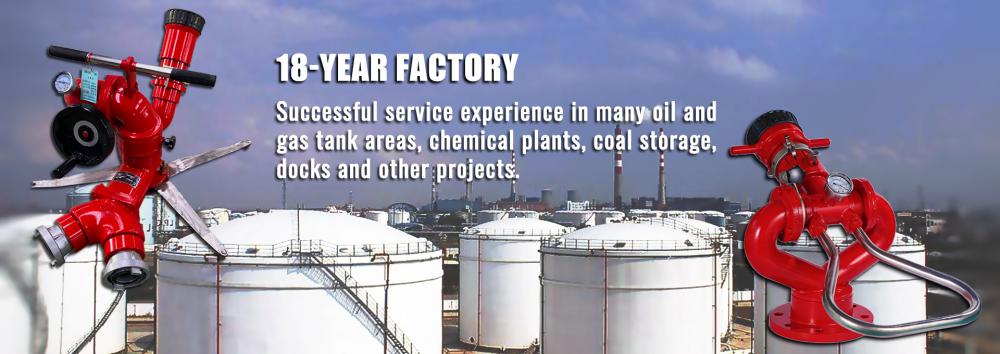Manual fire monitors are essential firefighting equipment widely used in industrial facilities, oil refineries, airports, and warehouses. As a leading manufacturer of fire protection solutions, we offer a diverse range of manual fire monitors, including the PS, PSY, PL, and PLY series, crafted from durable materials like carbon steel, stainless steel, and cast steel. This article explores the key types and features of these critical firefighting tools.

1. Understanding Manual Fire Monitors
Manual fire monitors are stationary or mobile devices designed to project high-velocity water or foam streams to extinguish fires. Unlike automatic systems, they require manual operation for direction and flow control, making them reliable in situations where human oversight is preferred.
2. Popular Types of Manual Fire Monitors
a. PS Series: Standard Fire Monitors (Water)
Model Example: PS30-50
Features:
Delivers water streams with a flow rate of 30–50 L/s.
Adjustable elevation and horizontal rotation for precise targeting.
Ideal for fixed installations in industrial zones.
Applications: Chemical plants, power stations, and storage yards.
b. PSY Series: Mobile Fire Monitors (Water)
Model Example: PSY30-50
Features:
Portable design with a wheeled base for rapid deployment.
Same performance as the PS series but with added mobility.
Quick-connect fittings for easy hose attachment.
Applications: Emergency firefighting, temporary setups, and disaster response.
c. PL Series: Foam Monitors
Model Example: PL24-48
Features:
Specifically designed for foam projection (flow rate: 24–48 L/s).
Compatible with foam concentrate systems for flammable liquid fires.
Robust construction to withstand harsh environments.
Applications: Oil refineries, fuel storage tanks, and aviation firefighting.
d. PLY Series: Mobile Foam Monitors
Model Example: PLY24-48
Features:
Combines foam discharge capability with mobility.
Often includes a foam tank or inlet for external foam supply.
Lightweight yet durable for field operations.
Applications: Petrochemical facilities, firefighting brigades, and marine firefighting.
3. Material Options for Fire Monitors
The durability and corrosion resistance of fire monitors depend on their construction materials. We offer three primary options:
a. Carbon Steel
Pros: Cost-effective, high strength.
Cons: Requires regular maintenance to prevent rust.
Best For: Indoor installations or short-term outdoor use with protective coatings.
b. Stainless Steel
Pros: Excellent corrosion resistance, low maintenance.
Cons: Higher cost than carbon steel.
Best For: Coastal areas, chemical plants, and long-term outdoor use.
c. Cast Steel
Pros: Superior durability, impact-resistant.
Cons: Heavier than other materials.
Best For: High-pressure applications and extreme environments.
4. How to Choose the Right Fire Monitor
Consider these factors when selecting a manual fire monitor:
Fire Risk: Use water monitors (PS/PSY) for Class A fires and foam monitors (PL/PLY) for flammable liquids.
Mobility Needs: Mobile units (PSY/PLY) are ideal for flexible operations.
Environment: Stainless steel is recommended for corrosive or marine settings.
5. Why Choose Our Fire Monitors?
As a trusted manufacturer, we ensure:
Compliance with international standards (NFPA, UL, CE).
Customizable options (nozzles, materials, pressure ratings).
Rigorous testing for performance and reliability.
Conclusion
Manual fire monitors like the PS30-50, PSY30-50, PL24-48, and PLY series are indispensable tools for industrial fire protection. By selecting the appropriate type and material, you can enhance your facility’s safety and response efficiency. Contact us today to find the perfect firefighting solution for your needs!






